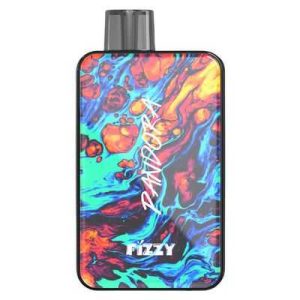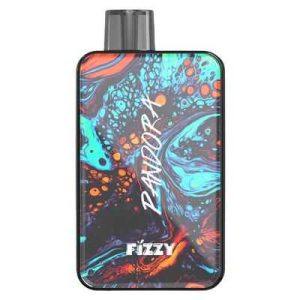Vape Ingredients: in-depth analysis of the composition and Potential impact of e-liquid
The core of an e-cigarette, a product that substitutes traditional tobacco, lies in the vape ingredients it uses. Do you truly understand what exactly is being inhaled into your body? These vape ingredients not only determine the intensity of the smoke and the quality of the taste, but also are closely related to the health of the users. A thorough understanding of these components is a crucial step in making wise choices.

The basic components of Vape Ingredients: core solvent
- Propylene Glycol (Propylene glycol, PG): this is one of the most common vape ingredients in e-liquid. It is a colorless and odorless liquid. Its main function is to dissolve nicotine and flavoring, and it is responsible for creating a slight “throat-hitting sensation” when inhaled, simulating the feeling of traditional cigarettes. PG itself is widely used in food and cosmetics and is generally regarded as safe. However, when it is heated and atomized and inhaled into the lungs, its long-term effects are still under study. Some users may experience dry throat, irritation or even allergic reactions to PG.
- Vegetable Glycerin (VG): This is another key type of vape ingredients. VG is more viscous than PG and has a slightly sweet taste. Its main function is to generate a large amount of visible mist (smoke). VG is also commonly found in food and cosmetics. E-liquids with a high VG content usually have a smoother taste, but a weaker throat impact. After heating and atomization, high-concentration VG sometimes causes a heavy feeling at the back of the throat.
The core of Vape Ingredients: nicotine
Nicotine is undoubtedly the most watched vape in e-liquid ingredients. It originates from tobacco plants and is the main substance that provides satisfaction and addiction in e-cigarettes. The nicotine content in e-liquids varies greatly, ranging from zero nicotine (0mg/mL) to high concentrations (such as 50mg/mL or higher), and is usually marked on the e-liquid bottle. Users can choose different concentrations according to their own needs. Nicotine is a potent neurotoxin with high addictive properties, which can put pressure on the cardiovascular system and is particularly harmful to the brain development of teenagers. Regardless of its source, the addictive nature and health risks of nicotine itself are clearly present.

The flavor soul of Vape Ingredients: essence
Flavoring gives e-cigarettes a wide variety of flavors and is an important attraction for users vape ingredients. These flavors are extremely diverse, ranging from tobacco, fruit, dessert to beverage flavors. Most e-cigarette flavorings use flavoring compounds that have been approved for use in food. However, “edible” by no means equals “inhalable” safety.
The lung tissue is completely different from the digestive system. When these fragrance compounds are heated and atomized and inhaled into the lungs, their safety and potential impacts are the focus of current research. Certain specific flavor compounds (such as diacetyl and its substitutes) have been proven to be associated with serious lung diseases (such as “popcorn lung”). Although these high-risk components have been significantly reduced in regular products, the risks have not been completely eliminated.
Other potential Ingredients in Vape Ingredients
In addition to the core PG, VG, nicotine and flavoring, e-liquid may also contain a small but not negligible amount of vape ingredients:
- Water: Sometimes used to dilute the concentration of the e-liquid.
- Alcohol: A solvent for certain flavorings, which may enhance the throat-piercing sensation or specific flavors.
- Sweeteners: such as sucralose, are used to increase sweetness, but they may produce harmful compounds when heated.
- Coolants: such as menthol or synthetic coolants (such as WS-3, WS-23), which provide a refreshing taste, have insufficient research on their inhalation safety.
- Acid regulators: such as benzoic acid, are used to adjust the pH value of e-liquid or stabilize nicotine salts.
- Nicotine salts: These are compounds formed by the combination of nicotine and specific organic acids, such as benzoic acid and salicylic acid. It allows the e-liquid to contain a high concentration of nicotine while providing a smoother and less irritating inhalation experience on lower-power devices, significantly enhancing the palatability of high-concentration nicotine, but it may also lead to a higher nicotine intake.

The risk of heating atomization of Vape Ingredients
The core principle of e-cigarettes is to heat and atomize the e-liquid containing vape ingredients. This process itself brings potential risks:
- Unknown chemical reactions: When PG, VG, flavoring, nicotine and other additives are heated to high temperatures, complex chemical reactions may occur among them and between them and the atomizer material, generating new compounds. These newly generated compounds may contain known carcinogens or toxic substances such as formaldehyde, acetaldehyde, and acrolein. The types and concentrations of these substances are influenced by multiple factors including equipment power, temperature control accuracy, and the composition of the e-liquid.
- Metal particle release: Poor-quality or aged nebulizer cores (typically composed of metal coils and oil-conducting cotton) may release tiny metal particles (such as lead, tin, nickel, and chromium) at high temperatures. These particles can be directly inhaled deep into the lungs, causing potential harm.
- Ultrafine particulate matter: The aerosols produced by atomization contain a large amount of ultrafine particulate matter, which can penetrate deep into the lungs and even enter the bloodstream, imposing a burden on the respiratory and cardiovascular systems.
Vape Ingredients and health: ongoing research and concerns
The scientific community is still conducting extensive and in-depth research on vape ingredients and its health effects after inhalation. The main health concerns currently known include:
- Lung damage: Certain flavor additives (such as vitamin E acetate, which has been strongly associated with EVALI outbreaks) or harmful substances produced by heating may cause severe lung inflammation and damage.
- Cardiovascular effects: Nicotine itself can raise blood pressure, accelerate heart rate and increase the pressure on the cardiovascular system. Other nebulization products may also have a negative impact on vascular function.
- Adolescent development risks: Nicotine can seriously damage the developing brain of adolescents, affecting their attention, learning ability and impulse control. A variety of flavors have a strong appeal to teenagers.
- Long-term health risks unknown: E-cigarettes are relatively new, and the overall health impact of long-term inhalation of vape ingredients for decades is currently undetermined, with uncertain risks.
How to view Vape Ingredients more safely?
Although e-cigarettes are often regarded as less harmful than traditional cigarettes, this does not mean they are safe. It is very necessary to adopt a cautious attitude towards users or considering users:
- Choose regular products: Purchase products from reputable brands that strictly adhere to production standards, and avoid those of unknown origin or without smoke oil.
- Check the ingredient list: Read the label carefully to find out the main vape ingredients. Be cautious of products with ambiguous ingredient lists.
- Beware of high nicotine and fancy flavors: High concentrations of nicotine salts can easily lead to dependence. Overly complex or peculiar flavors may indicate the use of more chemical additives.
- Give priority to simple formulas: The simpler the ingredients of the e-liquid (such as only containing PG, VG, nicotine and a small amount of clear flavoring), the relatively lower the potential risk may be.
- Do not use unless necessary: The safest approach is to neither smoke nor use e-cigarettes. If you don’t smoke, never start using e-cigarettes. For smokers, if they choose e-cigarettes as a transitional tool for quitting smoking, the goal should also be to eventually completely break away from nicotine dependence.
Conclusion
A deep understanding of vape ingredients is the foundation for making informed choices. From basic PG and VG solvents to addictive nicotine, from flavorings with a myriad of flavors to various possible additives, each component may pose unique risks when heated and atomized and enter the lungs. Science is still striving to reveal the full effects of long-term inhalation of these components.
Before the fog has completely dissipated, stay vigilant, prioritize products with transparent ingredients and reliable sources, and always keep in mind that inhaling any non-essential substances into the lungs is not absolutely safe. Learning the truth about vape ingredients is the first step to taking responsibility for your own health. The ultimate choice lies in your own hands, and your choice determines the direction of your health.
